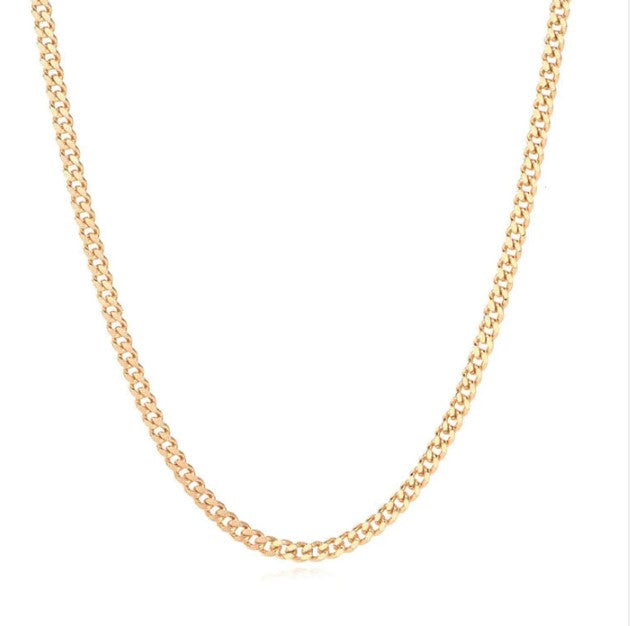Artikel: Decoding Karats: The Meaningful Differences Between 14k and 10k Gold

Decoding Karats: The Meaningful Differences Between 14k and 10k Gold
In addition to being a substantial financial investment, gold jewelry also serves as a stylish and elegant personal statement. Among the myriad of choices available, the karat rating of gold jewelry, especially in terms of 14k and 10k gold, is a critical factor that influences both its appearance and value. This article delves into the meaningful differences between 14k and 10k gold, helping enthusiasts and buyers make informed decisions when selecting authentic gold jewelry.
Understanding Karats in Gold Jewelry
The karat system is used to measure the purity of gold, with 24 karats representing pure gold. However, pure gold is too soft for everyday jewelry, leading to the creation of gold alloys mixed with other metals for added strength. The karat rating indicates the proportion of gold in these alloys, directly impacting the durability, color, and value of the piece.

10k Gold: An Overview
10k gold, containing 41.7% gold and 58.3% alloy metals, is the lowest karat gold that can still be legally sold as gold jewelry in many countries. Its higher alloy content makes it more durable and less prone to scratching, making it an excellent choice for everyday wear and gold chains that require resilience.
Advantages of 10k Gold
- Durability: The significant presence of alloy metals makes 10k gold highly durable and resistant to wear and tear.
- Affordability: Lower gold content means 10k gold is more affordable than higher karat options, making it accessible for a wider audience.
- Practicality: Its strength makes 10k gold an ideal choice for items like rings and bracelets that are susceptible to bumps and scratches.
Considerations for 10k Gold
- Color: 10k gold has a lighter appearance, with a less rich yellow tone compared to higher karat gold due to its alloy content.
- Potential for Skin Irritation: The higher percentage of alloy metals, including nickel, may cause skin irritation for some wearers.
14k Gold: An Overview
14k gold, which consists of 58.3% gold and 41.7% alloy metals, strikes a balance between purity and practicality. It offers a richer, warmer color while maintaining sufficient durability for daily wear. This karat rating is a popular choice for both high-end and everyday gold jewelry, including engagement rings and fine chains.

Advantages of 14k Gold
- Optimal Balance: 14k gold provides an excellent balance between gold content and durability, making it suitable for a wide range of jewelry.
- Richer Color: It has a more vibrant yellow color, appealing to those who prefer their jewelry to have the classic gold appearance.
- Less Likely to Cause Allergies: With a higher gold content, 14k gold is less likely to cause skin irritation compared to 10k gold.
Considerations for 14k Gold
- Price: Higher purity means 14k gold is more expensive than 10k gold, though it offers better value for those seeking a closer approximation to pure gold.
- Durability Compared to 10k: While still strong, 14k gold is slightly softer than 10k gold, making it more susceptible to wear over time.
Deciding Between 10k and 14k Gold
When choosing between 10k and 14k gold, consider the following factors:
- Budget and Value: If affordability is key, 10k gold offers the benefits of gold jewelry at a lower price point. For those who value a richer gold color and higher purity, 14k gold is a better choice.
- Lifestyle and Wear: For jewelry that will endure heavy use, 10k gold’s durability makes it a practical option. For special occasions or pieces that require a more pronounced gold color and luster, 14k gold stands out.
- Skin Sensitivity: Individuals with sensitive skin may prefer 14k gold due to its higher gold content and reduced risk of allergic reactions.

Caring for Your Gold Jewelry
Regardless of whether you choose 10k or 14k gold, proper care is essential to maintain its beauty and longevity. Regular cleaning, avoiding exposure to harsh chemicals, and storing your gold jewelry in a soft cloth or pouch can help preserve its luster and prevent damage.
The choice between 10k and 14k gold involves a consideration of personal preferences, lifestyle, and budget. While 10k gold offers durability and affordability, 14k gold provides a richer appearance and a better balance between purity and practicality. Understanding these differences empowers buyers to select gold jewelry that not only meets their aesthetic and functional needs but also represents a meaningful and authentic expression of their personal style.


